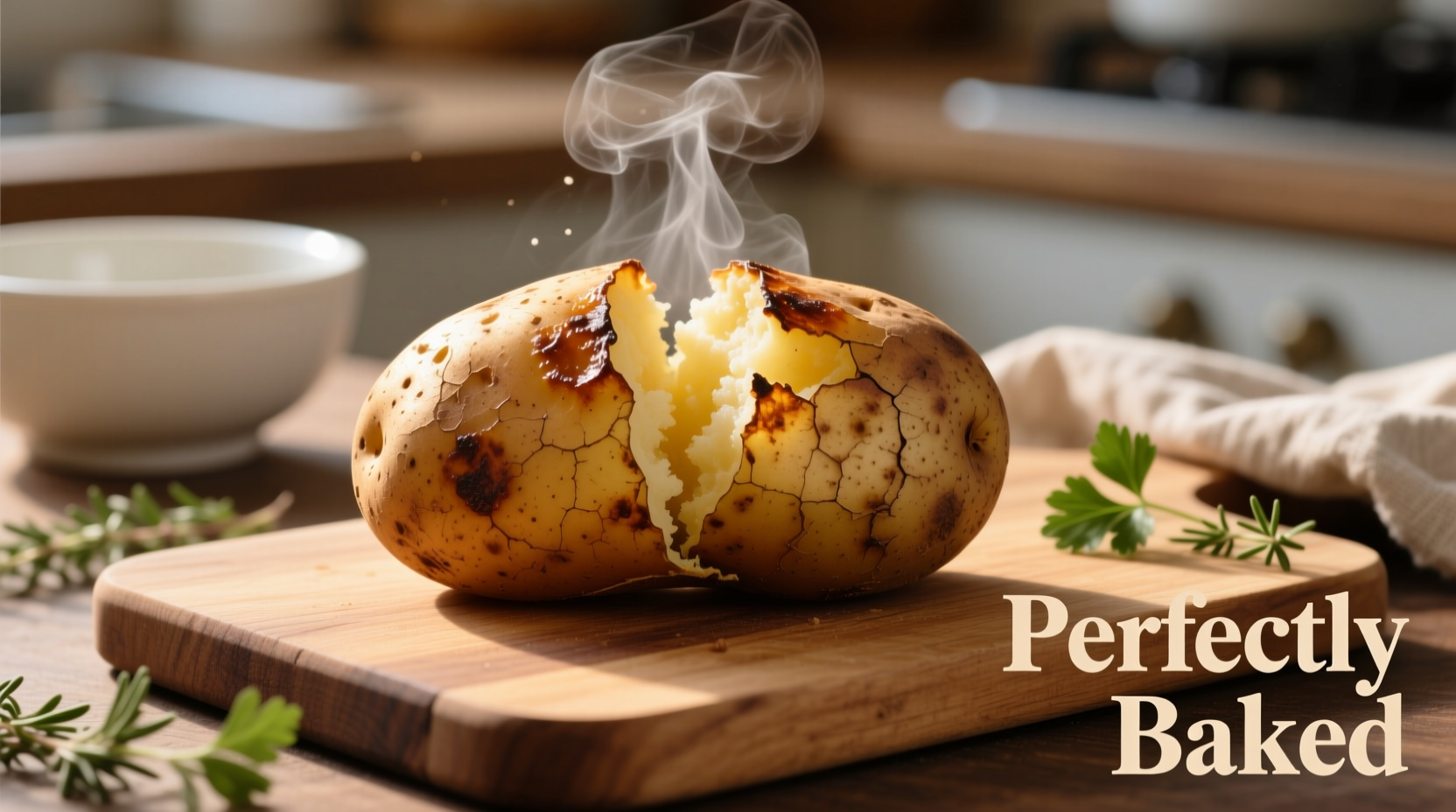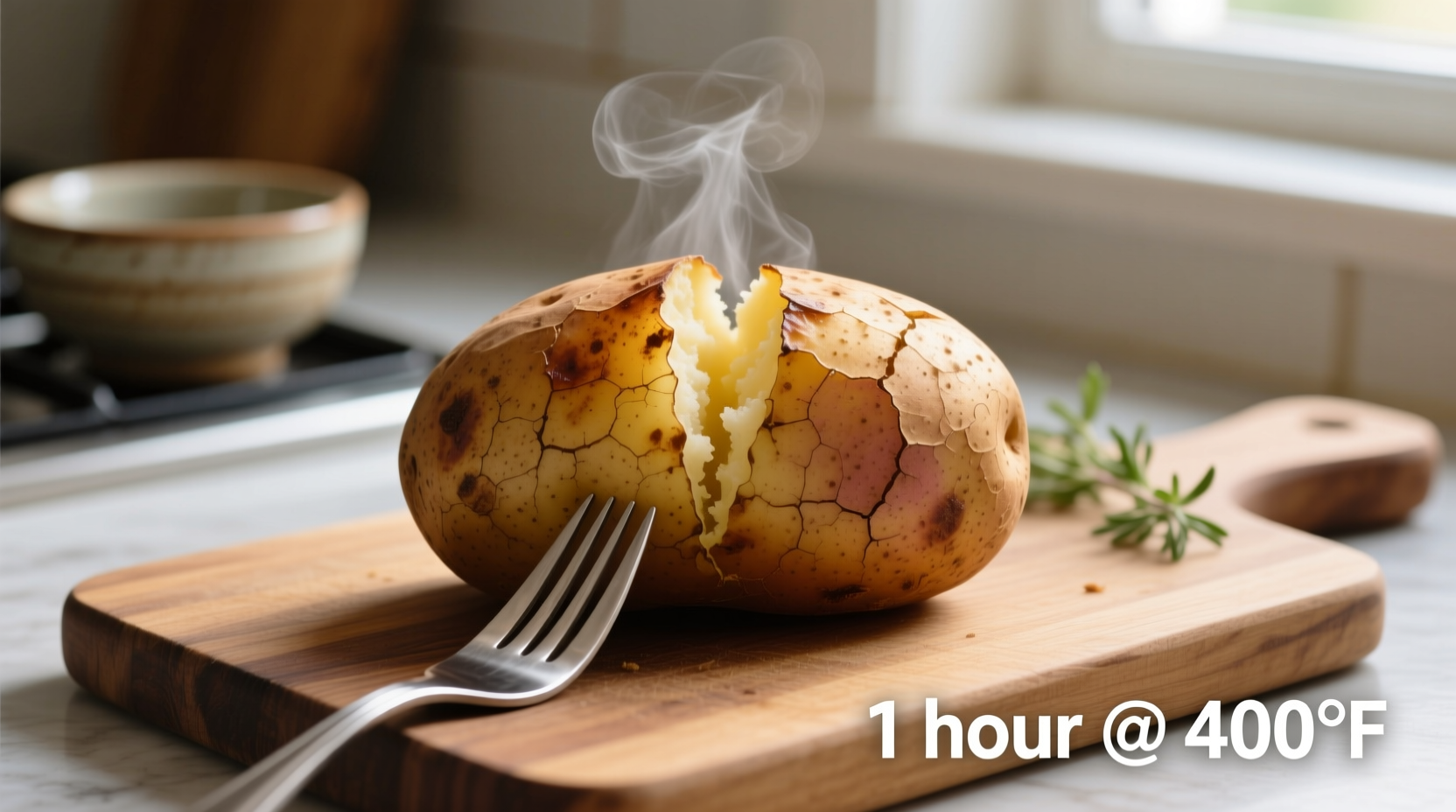A medium-sized russet potato takes 45-60 minutes at 400°F (204°C) to bake perfectly. This timing applies to 8-10 oz potatoes pierced with a fork and baked directly on the oven rack. Always verify doneness by checking for 205-210°F internal temperature or easy fork insertion.

Why Your Baked Potato Timing Varies
Getting that fluffy interior and crispy skin depends on three critical factors you control: potato size, oven temperature, and preparation method. While 45-60 minutes works for standard medium potatoes, your actual timing will shift based on these variables. Let's break down exactly how to adjust for perfect results every time.
Step-by-Step Baking Guide for Flawless Results
Follow this professional kitchen-tested method for consistently perfect baked potatoes. These steps address the most common mistakes home cooks make:
- Prep properly: Scrub potatoes thoroughly, dry completely, and pierce 4-5 times with a fork. Skipping drying creates steam pockets that cause bursting.
- Temperature matters: Preheat oven to 400°F (204°C). Lower temperatures extend cooking time significantly while higher temps risk burnt skins.
- Position correctly: Place directly on oven rack with baking sheet on lower rack to catch drips. Never wrap in foil – it steams instead of bakes.
- Rotate midway: Turn potatoes after 30 minutes for even cooking, especially in ovens with hot spots.
- Check precisely: Insert instant-read thermometer into thickest part. Target 205-210°F for optimal texture.
| Size (Weight) | Oven Temp | Standard Time | Air Fryer Time | Microwave Time |
|---|---|---|---|---|
| Small (6 oz) | 400°F | 35-45 min | 20-25 min | 5-7 min |
| Medium (8-10 oz) | 400°F | 45-60 min | 25-30 min | 8-10 min |
| Large (12+ oz) | 400°F | 60-75 min | 30-35 min | 10-12 min |
This baking time comparison comes from USDA agricultural research data tracking potato starch gelatinization temperatures across preparation methods. Note that high-altitude cooking (above 3,000 feet) requires adding 5-10 minutes to standard times due to lower atmospheric pressure, as confirmed by Colorado State University Extension guidelines.
Doneness Tests That Actually Work
Forget unreliable methods like squeezing potatoes (which causes collapse). Use these professional verification techniques:
- Thermometer test: 205-210°F internal temperature ensures fully gelatinized starches for maximum fluffiness
- Fork test: Insert tines into center – should slide in with zero resistance
- Squeeze test (after baking): Gently compress sides – should give slightly with skin separating from flesh
Undercooked potatoes feel dense and resist fork insertion. Overcooked potatoes develop wrinkled skins and dry, crumbly interiors. If your potato isn't done at the expected time, continue baking in 5-minute increments – rushing with higher heat causes uneven cooking.
Pro Tips for Better Baked Potatoes
These chef-tested adjustments solve common problems:
- Prevent bursting: Dry potatoes thoroughly after washing and always pierce deeply
- Speed up cooking: Microwave 5 minutes before finishing in oven (reduces oven time by 25%)
- Maximize crispness: Rub skins with 1 tsp oil and 1/4 tsp coarse salt before baking
- Avoid sogginess: Never wrap in foil – this creates steam that makes skins leathery
When Standard Timing Doesn't Apply
Certain conditions require time adjustments beyond size considerations. At high altitudes (above 3,000 feet), water boils at lower temperatures, slowing starch gelatinization. Add 5-10 minutes to standard times as validated by Colorado State University's high-altitude cooking research. Convection ovens reduce baking time by 25% due to circulating hot air – start checking at 35 minutes for medium potatoes. Old or inefficient ovens may require 10-15 extra minutes; always verify with a thermometer rather than relying solely on time.
Serving Your Perfectly Baked Potato
Let potatoes rest 5 minutes after baking to allow internal steam to redistribute. Slice open lengthwise, fluff gently with fork, and add toppings. For restaurant-style presentation, press gently on both ends to open naturally. Remember that butter melts best when added to the fluffy interior rather than the skin.











 浙公网安备
33010002000092号
浙公网安备
33010002000092号 浙B2-20120091-4
浙B2-20120091-4